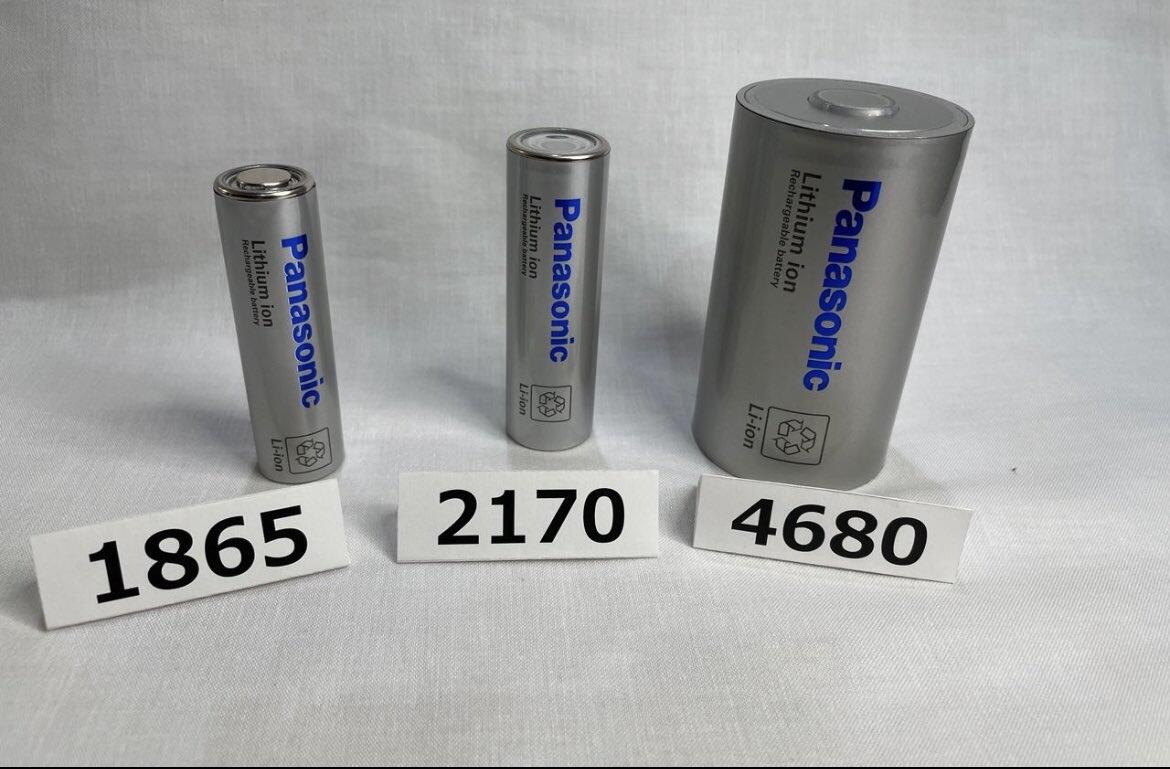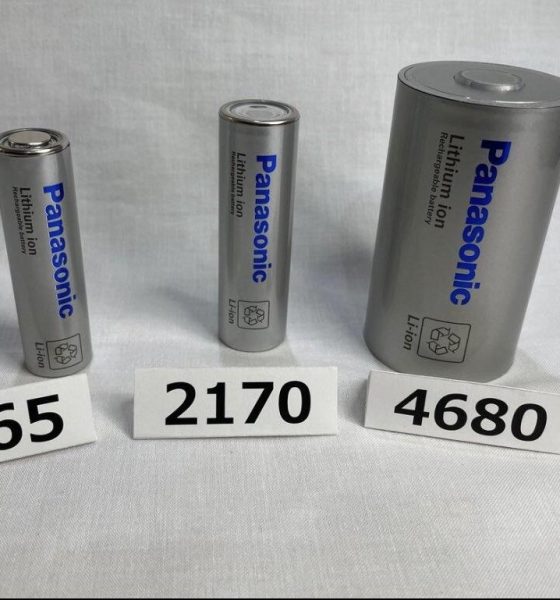Kazuo Tadanobu, the CEO of Panasonic’s energy division, recently shared some insights about the company’s upcoming 4680 batteries, which would be sold to longtime partner Tesla. Tadanobu mentioned a number of key observations about the upcoming batteries, particularly on how the 4680 cells could effectively initiate change in the transportation sector.
Panasonic has been working on its 4680 battery for about a year and a half now, and it has not been easy. According to the executive, the development of the new batteries has “taken an immense amount of stamina.” This was because creating 4680 batteries is not as simple as enlarging existing cells. Tadanobu noted that changing the entire shape of the cell took “considerable nerve,” and that Panasonic “didn’t know how they would be received” by Tesla.
Fortunately for Panasonic, Tesla has reportedly acknowledged the Japanese company’s work on its 4680 batteries. Tesla has reportedly deemed Panasonic’s 4680 cells viable, as they meet the level of performance that the American electric vehicle maker is seeking. This is a good sign for Panasonic’s 4680 program, considering that Tesla itself is also ramping the production of its in-house 4680 cells.
Tesla’s home-grown 4680 cells will likely see their initial deployment in the Made-in-Texas Model Y, which will be produced at Gigafactory Texas. So far, Tesla’s 4680 production is limited to the company’s pilot line in Kato Road, close to the Fremont Factory. That’s a facility that has the potential to ramp to 10 GWh per year, but it’s still being improved today, with the company announcing last month that it had produced its 1 millionth 4680 battery cell in January. Tesla would likely need as many 4680 batteries as it could get, considering the launch of upcoming vehicles such as the Cybertruck, Semi, and new Roadster.
Panasonic, for its part, has been sharing its battery partnership with Tesla with rivals such as LG Energy Solution and Contemporary Amperex Technology Co. (CATL), both of which are extremely aggressive. Yet despite the rising competition, such as LG Energy Solution previously stating back in 2020 that it intends to be Tesla’s primary battery supplier in the future, Panasonic believes that the quality and safety of its batteries would speak for themselves.
According to Tadanobu, Panasonic’s advantage in the market lies in its capability to “use craftsmanship to maintain safety even while raising the performance of a battery.” And after leading the development of the next-generation cells, the executive noted that Panasonic would work very hard to retain its spot. “We don’t want to lose,” the Panasonic executive said.
Overall, the executive explained that Panasonic’s hard work in developing 4680 batteries for clients like Tesla is due to the company’s belief that the cells themselves have the potential to change the world of transport. If 4680 battery cells become successful, they would have a considerable impact in lowering the cost of electric vehicles. And if this happens, electric vehicle adoption would likely increase. “We see them as a new path forward,” Tadanobu said.
*Quotes courtesy of Bloomberg, which interviewed Tadanobu in Osaka.
Don’t hesitate to contact us with news tips. Just send a message to simon@teslarati.com to give us a heads up.

News
Tesla FSD fleet is nearing 7 billion total miles, including 2.5 billion city miles
As can be seen on Tesla’s official FSD webpage, vehicles equipped with the system have now navigated over 6.99 billion miles.

Tesla’s Full Self-Driving (Supervised) fleet is closing in on almost 7 billion total miles driven, as per data posted by the company on its official FSD webpage.
These figures hint at the massive scale of data fueling Tesla’s rapid FSD improvements, which have been quite notable as of late.
FSD mileage milestones
As can be seen on Tesla’s official FSD webpage, vehicles equipped with the system have now navigated over 6.99 billion miles. Tesla owner and avid FSD tester Whole Mars Catalog also shared a screenshot indicating that from the nearly 7 billion miles traveled by the FSD fleet, more than 2.5 billion miles were driven inside cities.
City miles are particularly valuable for complex urban scenarios like unprotected turns, pedestrian interactions, and traffic lights. This is also the difference-maker for FSD, as only complex solutions, such as Waymo’s self-driving taxis, operate similarly on inner-city streets. And even then, incidents such as the San Francisco blackouts have proven challenging for sensor-rich vehicles like Waymos.
Tesla’s data edge
Tesla has a number of advantages in the autonomous vehicle sector, one of which is the size of its fleet and the number of vehicles training FSD on real-world roads. Tesla’s nearly 7 billion FSD miles then allow the company to roll out updates that make its vehicles behave like they are being driven by experienced drivers, even if they are operating on their own.
So notable are Tesla’s improvements to FSD that NVIDIA Director of Robotics Jim Fan, after experiencing FSD v14, noted that the system is the first AI that passes what he described as a “Physical Turing Test.”
“Despite knowing exactly how robot learning works, I still find it magical watching the steering wheel turn by itself. First it feels surreal, next it becomes routine. Then, like the smartphone, taking it away actively hurts. This is how humanity gets rewired and glued to god-like technologies,” Fan wrote in a post on X.
News
Tesla starts showing how FSD will change lives in Europe
Local officials tested the system on narrow country roads and were impressed by FSD’s smooth, human-like driving, with some calling the service a game-changer for everyday life in areas that are far from urban centers.

Tesla has launched Europe’s first public shuttle service using Full Self-Driving (Supervised) in the rural Eifelkreis Bitburg-Prüm region of Germany, demonstrating how the technology can restore independence and mobility for people who struggle with limited transport options.
Local officials tested the system on narrow country roads and were impressed by FSD’s smooth, human-like driving, with some calling the service a game-changer for everyday life in areas that are far from urban centers.
Officials see real impact on rural residents
Arzfeld Mayor Johannes Kuhl and District Administrator Andreas Kruppert personally tested the Tesla shuttle service. This allowed them to see just how well FSD navigated winding lanes and rural roads confidently. Kruppert said, “Autonomous driving sounds like science fiction to many, but we simply see here that it works totally well in rural regions too.” Kuhl, for his part, also noted that FSD “feels like a very experienced driver.”
The pilot complements the area’s “Citizen Bus” program, which provides on-demand rides for elderly residents who can no longer drive themselves. Tesla Europe shared a video of a demonstration of the service, highlighting how FSD gives people their freedom back, even in places where public transport is not as prevalent.
What the Ministry for Economic Affairs and Transport says
Rhineland-Palatinate’s Minister Daniela Schmitt supported the project, praising the collaboration that made this “first of its kind in Europe” possible. As per the ministry, the rural rollout for the service shows FSD’s potential beyond major cities, and it delivers tangible benefits like grocery runs, doctor visits, and social connections for isolated residents.
“Reliable and flexible mobility is especially vital in rural areas. With the launch of a shuttle service using self-driving vehicles (FSD supervised) by Tesla in the Eifelkreis Bitburg-Prüm, an innovative pilot project is now getting underway that complements local community bus services. It is the first project of its kind in Europe.
“The result is a real gain for rural mobility: greater accessibility, more flexibility and tangible benefits for everyday life. A strong signal for innovation, cooperation and future-oriented mobility beyond urban centers,” the ministry wrote in a LinkedIn post.
News
Tesla China quietly posts Robotaxi-related job listing
Tesla China is currently seeking a Low Voltage Electrical Engineer to work on circuit board design for the company’s autonomous vehicles.

Tesla has posted a new job listing in Shanghai explicitly tied to its Robotaxi program, fueling speculation that the company is preparing to launch its dedicated autonomous ride-hailing service in China.
As noted in the listing, Tesla China is currently seeking a Low Voltage Electrical Engineer to work on circuit board design for the company’s autonomous vehicles.
Robotaxi-specific role
The listing, which was shared on social media platform X by industry watcher @tslaming, suggested that Tesla China is looking to fill the role urgently. The job listing itself specifically mentions that the person hired for the role will be working on the Low Voltage Hardware team, which would design the circuit boards that would serve as the nervous system of the Robotaxi.
Key tasks for the role, as indicated in the job listing, include collaboration with PCB layout, firmware, mechanical, program management, and validation teams, among other responsibilities. The role is based in Shanghai.
China Robotaxi launch
China represents a massive potential market for robotaxis, with its dense urban centers and supportive policies in select cities. Tesla has limited permission to roll out FSD in the country, though despite this, its vehicles have been hailed as among the best in the market when it comes to autonomous features. So far, at least, it appears that China supports Tesla’s FSD and Robotaxi rollout.
This was hinted at in November, when Tesla brought the Cybercab to the 8th China International Import Expo (CIIE) in Shanghai, marking the first time that the autonomous two-seater was brought to the Asia-Pacific region. The vehicle, despite not having a release date in China, received a significant amount of interest among the event’s attendees.










